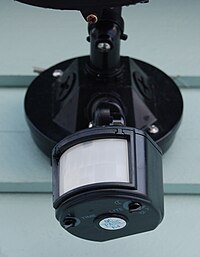
Photo from wikipedia
Hydrogels have attracted considerable interest in developing flexible bioelectronics such as wearable devices, brain-machine interface products, and health-monitoring sensors. However, these bioelectronics are always challenged by microbial contamination, which frequently… Click to show full abstract
Hydrogels have attracted considerable interest in developing flexible bioelectronics such as wearable devices, brain-machine interface products, and health-monitoring sensors. However, these bioelectronics are always challenged by microbial contamination, which frequently reduces their service life and durability due to a lack of antibacterial property. Herein, we report a class of inherently antibacterial conductive hydrogels (ACGs) as bioelectronics for motion and temperature detection. The ACGs were composed of poly(N-isopropylacrylamide) (pNIPAM) and silver nanowires (AgNWs) via a two-step polymerization strategy, which increased the crosslink density for enhanced mechanical properties. The introduction of AgNWs improved the conductivity of ACGs and endowed them with excellent antibacterial activity against both Gram-positive and -negative bacteria. Meanwhile, pNIPAM existed in ACGs and exhibited a thermal responsive behavior, thereby inducing sharp changes in their conductivity around body temperature, which was successfully employed to assemble a temperature alarm. Moreover, ACG-based sensors exhibited excellent sensitivity (within a small strain of 5%) and the capability of capturing various motion signals (finger bending, elbow bending, and even throat vibrating). Benefiting from the superiority of ACG-based sensors, we further demonstrated a wearable wireless system for the remote control of a vehicle, which is expected to help disabled people in the future.
Journal Title: ACS applied materials & interfaces
Year Published: 2022
Link to full text (if available)
Share on Social Media: Sign Up to like & get
recommendations!